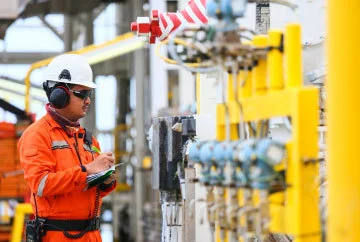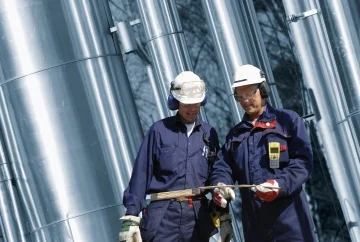Better Asset Visibility
IT-OT convergence is built on the premise of connected assets because operational data is obtained by measuring the operational footprint generated by various assets in real-time. This enables O&G companies to fully understand their assets, life cycles, commissioning and decommissioning protocols, and maintenance histories within a single asset management platform. This helps seal revenue leakages, eliminate redundant purchases when the same equipment is unused at another nearby site, and standardize asset management practices.
IT-OT Convergence Challenges
Despite the business benefits that IT-OT convergence unlocks, O&G companies have been slow to transform due to many challenges that underpin the transformation process. Here are a few key challenges that have emerged over the years.
Click to zoom in
IT-OT Cybersecurity
Because IT-OT convergence relies on the transmission of data from remote sites onto core IT systems of the business, it can present several network security challenges. Moreover, these networks must be highly available while preserving access integrity because of the potential for safety risks and losses that a breach can result in. While networking technology providers have pointed to the need for hygienic practices to seal off most security concerns, securing network perimeters, identifying the right networking protocols at a device level, and taking a modular approach to implementing zero-trust security paradigms can help organizations mitigate security risks that arise from such digital transformation efforts.
Data Management
Building an operational data platform is a key objective for an IT-OT convergence initiative. However, building it, in reality, requires most organizations to pay heed to several considerations. Data platforms deliver value only when the data available through them is cleaned, well-tagged, traceable, and contextualized, ready for use as engineers begin to
build new use cases with it. Moreover, internalizing the right access protocols and implementing them for high-availability, low latency use-cases must be balanced with the costs incurred. Lastly, building a data platform will require data engineering expertise, which the industry currently lacks.
Change Management
Ultimately, IT-OT convergence brings business benefits only when the use cases it empowers are put to use. However, this is dependent on the stickiness of the presentation of a use case and how the organization manages the change at the level of individual practice. For instance, low adoption of wearable safety device alarms and triggers will impede the level of safety associated with a site. Similarly, remote orchestration calls for many changes on the site, including reducing the human presence and empowering control room engineers with the necessary guardrails to complete processes. This also requires the incentivization of cross-functional expertise, as many processes like drilling and tracking and exploration intersects multi-disciplinary contexts.
IT-OT Convergence Strategy
Considerations For Oil & Gas Industry
The O&G industry is slowly catching up as leaders like Royal Dutch Shell, ExxonMobil, and BP adopt digital-driven practices to bring unmatched value propositions to their stakeholders and the market. However, smaller and mid-sized O&G companies will not have deep pockets to power a big-bang transformation. For such organizations, adopting an incremental approach that leverages end-to-end use cases to impact the bottom line simultaneously will be the key to an IT-OT convergence strategy that is viable on the sheets.
Moreover, the industry lacks digital-savvy talent like data engineers, networking experts, cloud and IoT expertise, and modernized IT, teams. As a result, partnering with reliable technology leaders who have demonstrated industry results will form a key determinant of success. Lastly, buy-in from the top will be necessary to bring concerted efforts instrumental to successful digital transformation initiatives.








